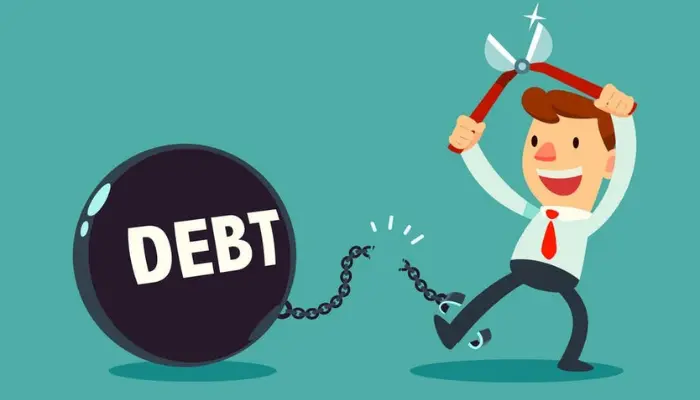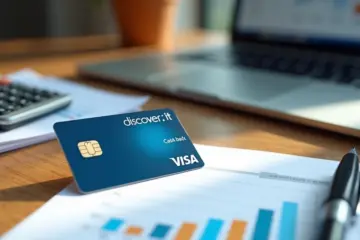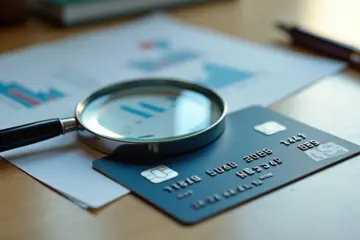How to Reduce Debt and Improve Your Financial Health
Debts are a part of life for many people and can become a heavy burden, both on the wallet and mental health.
Advertisement
But the good news is that with some habit changes and simple strategies, you can turn things around and regain financial control. Let’s explore how to do this practically and efficiently!
Advertisement
What Is Financial Health?
Before anything else, it’s important to understand what having good financial health means. Financial health isn’t just about “having extra money.”
It’s about having control over your finances, being able to pay your bills on time, saving for the future, and most importantly, not living with the stress of debts weighing on you.
Anúncios
If your financial health is poor, it might be because you:
- Are spending more than you earn.
- Have no idea where your money is going.
- Feel like you’re always “chasing” bills.
But don’t worry, this is very common, and with patience, you can change this situation.
Identifying the Source of Debts

To get out of debt, you need to know exactly where it’s coming from. Without understanding the problem, any solution will only be temporary.
Identifying what is causing the financial imbalance is the first step to organizing your finances and creating an efficient plan.
- Make a list of your debts: Write down everything, from the smallest to the largest. Include the total amount, interest rates, and payment deadlines.
- Understand the difference: Good debts help build something, like education. Bad debts only generate more expenses, like credit card revolving debt.
- Evaluate the impact of interest: High-interest debts, such as credit card debt, should be a priority to resolve.
Creating a Financial Diagnosis
Knowing where the problem lies is just the beginning. Now it’s time to dig deeper into your finances and understand how money is coming in and going out of your life.
This diagnosis works like an X-ray: it shows exactly where the weak points are and how you can adjust them.
Although it might seem complicated, with a few simple steps, you can have a clear and objective view of your financial situation.
- List all your income sources: Include salaries, freelancing, and any other sources of income.
- List your fixed and variable expenses: Separate them into fixed expenses, like rent, and variable ones, like grocery shopping.
- Calculate your debt-to-income ratio: Divide your total debts by your monthly income and multiply by 100. This shows the percentage of your income committed to debts.
If the number exceeds 30%, it’s a warning sign. This means a significant portion of your income is going toward paying off debts.
Methods to Reduce Debt
When it comes to paying off debt, there’s no one-size-fits-all solution – the best method is the one that works for you.
Two of the most popular and effective methods are the Snowball and Avalanche approaches. Both have their advantages but follow different strategies.
Here’s how each works so you can choose the one that best suits your needs.
Snowball Method
This method focuses on creating psychological momentum. You start by paying off the smallest debts while continuing to make minimum payments on the larger ones. Here’s how it works:
- How to apply: List your debts in ascending order by total amount, regardless of interest rates.
- Prioritize paying off the smallest debt first, putting as much money as possible toward it.
- Once the smallest debt is paid off, use the money freed up to tackle the next smallest, and so on.
Why does it work?
The Snowball Method provides a sense of quick progress. Seeing debts disappear one by one can be highly motivating, especially if you struggle to stay disciplined over the long term.
Avalanche Method
This method prioritizes financial efficiency, reducing the total amount you’ll pay over time. Instead of starting with the smallest debts, you focus on those with the highest interest rates.
- How to apply: List your debts in descending order of interest rates.
- Prioritize paying off the debt with the highest interest, putting as much money as possible toward it while maintaining minimum payments on the others.
- Once the highest-interest debt is paid off, move on to the next one on the list.
Why does it work?
The Avalanche Method minimizes the impact of interest, saving you more money in the long run. It’s ideal for those who can stay focused on a strategy that takes longer to show results.
Which one should you choose?
If you need motivation and want to see quick progress, go with the Snowball Method. If your goal is to save as much money as possible, even if it takes longer to see results, the Avalanche Method is your best bet.
Whichever you choose, the important thing is to start and stick to your plan!
Debt Negotiation
Did you know you can renegotiate your debts with creditors? Yes, many times they’re willing to offer better terms to ensure payment.
Here are some tips:
- Contact your creditors: Explain your situation and request a renegotiation.
- Offer a lump-sum payment: If you have some savings, you may be able to secure significant discounts.
- Participate in negotiation programs: Many companies and institutions offer events or initiatives to help indebted clients.
Avoiding New Debts
Paying off debts is a big step, but it’s pointless if you keep accumulating new ones. It’s like drying the floor while the faucet is still running – the problem won’t go away.
To avoid falling into the same trap, it’s essential to adopt healthier financial habits that help you live within your means.
Here are some simple tips to keep your finances on track and debt-free:
- Create an emergency fund: Having money set aside for unexpected expenses can save you from needing loans.
- Avoid revolving credit: It has extremely high interest rates that can snowball quickly.
- Plan your purchases: Before spending, ask yourself if it’s necessary and if you can pay for it upfront.
Building an Effective Financial Plan
Now that you’re on the right track, it’s time to create a plan to keep your finances under control.
A good financial plan helps you avoid surprises and provides more security.
How to Create a Financial Plan
- Set your financial goals: Do you want to pay off debts? Save for a trip? Clearly defining your objectives keeps you focused.
- Allocate your income: Use the 50/30/20 rule:
- 50% for needs (rent, bills, food).
- 30% for wants (entertainment, shopping).
- 20% for savings and debt repayment.
- Review your finances regularly: Take time monthly to check if you’re on track.
Extra Income Sources to Speed Up Debt Repayment
Sometimes, adjusting your budget and cutting expenses isn’t enough to manage debt. In these cases, increasing your income can be the solution to accelerate payments and ease the financial burden.
The good news is that nowadays, there are many practical and accessible ways to earn extra money, even with limited time.
Here are some simple ideas to help you generate additional income and achieve financial freedom faster:
- Freelance work: Offer online services like editing, design, or translation.
- Sell used items: Turn unused household items into quick cash.
- Work apps: Platforms like Uber, DoorDash, and TaskRabbit are great options.
Financial Education: The Key to Success
Investing in financial education is the best investment you can make. With more knowledge, you make smarter decisions and avoid financial pitfalls.
- Recommended books: The Total Money Makeover (Dave Ramsey) and Rich Dad Poor Dad (Robert Kiyosaki).
- Online courses: Platforms like Udemy and Coursera offer excellent content.
- Blogs and podcasts: Explore numerous free resources to learn on the go.
Maintaining Financial Health in the Long Run
Paying off debts is just the beginning. To ensure you never face the same problems again, it’s essential to adopt healthy financial habits:
- Revisit your budget: Adjust your finances as your income and expenses change.
- Set long-term goals: Like buying a house or planning for retirement.
- Invest in the future: After paying off debts, start allocating part of your income to investments.
Reducing debt and improving your financial health might seem like a massive challenge, but it’s entirely possible with focus and planning.
Remember, small changes today can bring significant benefits in the future.
Start now, one step at a time, and see how your life can improve financially and emotionally. Good luck!





